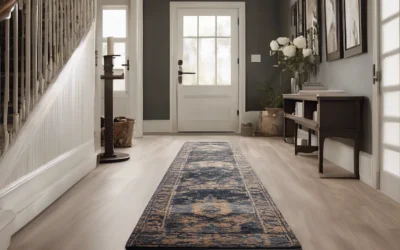
Building Outdoor Pizza Ovens With Proper Ventilation Systems
Introduction
Have you ever craved the perfect, wood-fired pizza, but the thought of building an outdoor pizza oven seemed overwhelming? You’re not alone! Many pizza enthusiasts dream of crafting their own backyard baking haven but often overlook one crucial element: proper ventilation. This guide helps you understand how to create outdoor pizza ovens with effective ventilation systems.
By learning about the key principles of oven ventilation, design alternatives, and installation methods, you will discover how to maximize heat and minimize smoke. By the end, you’ll be ready to impress your friends and family with an oven that bakes the best pizzas effortlessly.
Here’s what you’ll be diving into: the importance of ventilation, types of systems, installation techniques, maintenance tips, and much more!
The Importance of Ventilation in Outdoor Pizza Ovens
Ventilation isn’t just an afterthought; it’s an essential aspect of any outdoor pizza oven. Without proper airflow, your oven can become less efficient, resulting in temperature inconsistencies and inefficient fuel use.
Why Proper Ventilation Matters
Here are a few reasons why proper ventilation is critical:
- Heat Retention: Proper ventilation ensures that heat circulates, enabling consistent cooking.
- Smoke Management: Efficient ventilation helps steer smoke away, improving air quality around the oven.
- Fuel Efficiency: It maximizes the use of wood or other fuels, resulting in longer burn times.
Types of Ventilation Systems
Understanding the different types of ventilation systems can empower you to make the best choice for your outdoor pizza oven’s design.
Natural Ventilation
This relies on natural airflow and chimney openings. It’s ideal for traditional designs but may be limited in effectiveness in specific weather conditions.
Mechanical Ventilation
Using fans and blowers, mechanical systems improve air circulation and remove smoke actively. They are more efficient but require electrical components, which may not always fit a rustic aesthetic.
Hybrid Systems
These combine the best of both worlds, using natural ventilation supplemented by mechanical aids. They provide flexibility and efficiency.
Implementing Ventilation: Design Considerations
Chimney Placement
The chimney is essential for directing smoke and maintaining air flow. It should be positioned at least 1-2 feet above the highest point of the oven for optimal effectiveness.
Flue Size
The flue size is crucial in regulating airflow and should be calculated based on the oven’s dimensions. A general guideline is a one square inch of flue area for every square foot of oven floor space.
Air Intake
Direct air vents help introduce fresh air into the system, promoting combustion efficiency. Ideally, this should be incorporated at the oven base or sides.
Installation Techniques for Optimal Ventilation
Choosing the Right Materials
High-quality materials can determine the longevity and effectiveness of your ventilation system. Use non-combustible materials that can withstand high temperatures.
Step-By-Step Installation
- Gather Necessary Tools: Ensure you have the right tools, including a masonry saw, drill, and measuring tape.
- Construct the Oven: Follow your oven plans, keeping ventilation in mind from the start.
- Install Chimney and Flue: Attach the chimney and flue according to specified height and width dimensions.
- Test Airflow: Once everything is in place, light a small fire to observe smoke flow. Adjust as necessary.
Maintenance of Your Ventilation System
Keeping your ventilation system in good shape is essential for consistent oven performance.
Regular Inspection
Check your chimney and flue for blockages or creosote build-up regularly. This may require annual cleanings or inspections to maintain optimal airflow.
Installation of Screens
Consider adding screens at intake openings to prevent debris or pests from entering.
Case Studies: Successful Outdoor Pizza Oven Ventilation
Example 1: The Artisan Builder
An artisan builder invested in a hybrid ventilation system combining traditional brickwork with mechanical airflow to enhance efficiency. The result? Perfectly baked Neapolitan pizzas that gained local acclaim.
Example 2: The Self-Build Enthusiast
A DIYer followed a step-by-step guide to install his outdoor pizza oven. By prioritizing chimney height and flue size, he successfully created an efficient ventilation system that minimized smoke and maximized cooking performance.
Conclusion & Next Steps
Building outdoor pizza ovens with proper ventilation systems is a rewarding project that pays off in delicious ways. By understanding the importance of ventilation, choosing the right system, and following best practices for installation and maintenance, you’ll ensure that your outdoor oven works perfectly.
Don’t stop here! Explore our related articles on pizza toppings, outdoor cooking tips, and pizza dough recipes to further enhance your outdoor cooking experience!
FAQ
How important is ventilation for an outdoor pizza oven?
Proper ventilation is crucial for heat retention, smoke management, and fuel efficiency. Without it, your cooking results may be inconsistent.
What materials are best for flue installation?
Use non-combustible materials like stainless steel or masonry to ensure durability and safety under high temperatures.
How often should I maintain my ventilation system?
Regular inspections should occur at least annually, with more frequent checks if your oven is used heavily.
Can I install a ventilation system myself?
Yes, but ensure you follow guidelines and safety measures. Consulting with a professional can also provide clarity and assurance.
What are signs of improper ventilation?
Signs include excessive smoke, a sooty build-up around your oven, and inconsistent cooking temperatures.
Content Disclaimer
Information provided in this article is for educational purposes only. Always consult with professionals for specific advice related to construction and ventilation systems.
Categories
- Accent Walls & Ceilings (61)
- Art Curation & Gallery (62)
- Bedding Style Trends (68)
- Bedroom Makeover (81)
- Bohemian & Eclectic Styles (58)
- DIY & Budget-Friendly Decor (64)
- Eco-Friendly Design (62)
- Furniture Care (71)
- Home Decor & Design Ideas (162)
- Home Wellness Spaces (59)
- Integrated Outdoor Living (67)
- Japandi Style (61)
- Kids and Nursery Decor (59)
- Living Room Decor (79)
- Mix & Match Techniques (73)
- Modern & Contemporary Design (66)
- Rug Sizing & Placement (73)
- Scandinavian Design Inspiration (22)
- Seasonal Home Decor (79)
- Small Space Solutions (73)
- Wall Art & Painting Tips (77)
Recent Comments
Archives
Product Gallery
-
Large Area Green Rugs for Bedroom Nordic Living Room Decoration Shaped Carpet Irregular Plush Lounge Rug Home Thick Washable Mat
Rated 5.00 out of 5$36.00 – $225.00Price range: $36.00 through $225.00 -
Nordic Style Rugs for Bedroom Morandi Living Room Decoration Carpet Large Area Geometry Lounge Rug Home Cloakroom Non-slip Mat
Rated 5.00 out of 5$26.00 – $388.00Price range: $26.00 through $388.00 -
Irregular Shapes Living Room Decoration Carpet Modern Style Rugs for Bedroom Home Thicken Plush Rug Fluffy Soft Lounge Floor Mat
Rated 4.83 out of 5$37.00 – $226.00Price range: $37.00 through $226.00














